(Not So) Brief History Of The Brazilian Car. Parte Dois

This is part two of the Pictorial History of the Brazilian Car, a five part series, brought to you by our boy in Brazil, Marcelo de Vasconcellos. Part one one took you back to Brazil’s Stone age (WW II and thereafter.) This part takes you to …
The 50s were the golden era of Rio. The 60s marked the rise of São Paulo. Rio: sun, fun, beach and romance. São Paulo: drizzle, dirt, work and gray.
Politically, critics of Kubitschek gained ground. Accusations of corruption flew. Communists and socialists were on the rise. Some people started thinking a military solution would be in order. Washington, via its Condor covert operation, was working hard on a military solution. Washington was in the military solution business all over South America.
In the car industry, the ground was also shaking. Turmoil around the world made its way to Brazil. Takeovers changed the game in Brazil. Chrysler came (and absorbed Simca). Willys closed shop, but Ford took over operations and (weirdly) kept the Jeep products alive, selling Jeep and Rural (distant relative of Wagoneer and Bronco, too!).
Later in the decade, Ford would buy out Renault (resulting in another, uniquely Brazilian, but weird car for Ford, the Corcel:
It was in reality a Renault 12 – beautiful car and a runaway smash). They also launched their first “national” car, the Galaxie.
This car, along with the Corcel, would help consolidate Ford’s image in Brazil, makers of true luxury. Which meant younger people generally ignored them.
VW took over fellow countrymen DKW. They had bought them along with Audi in Germany. Volkswagen rode on the coattails of the Beetle to first place in the market. A position it would keep for almost 40 years. At some point in this decade (I think 1967) the Beetle would be 75 percent of all new cars sold in Brazil. Volkswagen also launched the Karmann Ghia. It became the slow riding whip of Brazil’s urban playboys.
GM would launch an enduring success: The Chevy Opala.
Based on the Opel Reckford, it inaugurated the era in which GM would turn its back to America and look to Europe for inspiration. Where the car was called Opel Rekord The market, and those who survived, also turned its eyes across the Atlantic, towards Europe.
Chrysler didn’t. Instead they launched the Dart/Charger.
Using the Dodge brand, it would forever burn its image into the imaginations of boys and men. Hemi ruled (briefly) here, too. Hemi kept American muscle ingrained in Brazilians’ imaginations.
Little noticed (especially in cities), Toyota also came (in fact when they started importing cars in the 90s, few associated that Toyota with the Brazilian one that kept producing that rustic jeep well into the 90s). Toyota’s first factory abroad was built here in Brazil. In that plant, Toyota produced, with minimal changes, the first generation Land Cruiser (which they re-baptized as the Bandeirante for the Brazilian market) for 40 very long years.
The 70s
Seen by many as the dark ages of military government. But most people didn’t really mind. Government spending fueled the economy. Nearly everybody had a job. After the turmoil of the 60s, wages were on the rise. The results though were high inflation and humongous debt (oh what a difference a few decades make). But that wasn’t felt until the late 70s and, especially, early 80s when the American crisis helped to finally knock that model for development down. Of course, the Arab oil crisis had a huge impact. Politically it spawned the Alcohol (Ethanol) Self-Sufficiency Program. In the car industry…
The first victim was Chrysler. Reeling from low sales. it hastily put together its version of the Hillman Avenger (or Plymouth Cricket in the USA) – the Dodge Polara (too little, too late, to say nothing of the early version’ reliability issues) in an effort to avoid the unavoidable.
Together with the crisis at home, Chrysler was forced to say bye-bye to Brazil. VW bought their operations in Brazil (for a song!). This lead to a curious situation. Some late model Chargers came out with VW tags. Imagine a VW Hemi V8 Challenger! Only in Brazil.
Ford’s Galaxie also bit the dust. Ford deposited many of its hopes for the decade and future into the Maverick, which carried much promise and provoked great anticipation and enthusiasm.
Unfortunately, it came out in the midst of the oil crisis. Gas-guzzler that it was, it flopped big.
So, Ford followed GM’s lead and started to look to Europe for inspiration. After all, the Corcel and, later, the Corcel II proved that Brazilians preferred (or were forced to prefer) European engineering. Many factors contributed to this no doubt, but high gas prices were, if not the strongest reason, certainly among the top 2 or 3 reasons.
VW soldiered on with the Beetle and the Bus. It did lead the market comfortably. The 70s were the decade when Volkswagen k new that the bug had to be euthanized – replaced by what? Just like back home, they haplessly puttered around for a while. They tried some variations of the Beetle such as the Bras.lia (basically a different, Brazilian-designed shell on the Beetle body) which was a success.
Other efforts failed miserably.
Zé do Caixão, as it was popularly called, or officially the 1600.
It also came as a TL fastback. Like in Deutschland, the cars were a dud.
A curious car came out. It smacked of sporting pretensions, but it was hampered by its Beetle mechanicals. Nonetheless, it was considered so beautiful that VW held on to one and exposes it in its museum in Germany. Developed largely in Brazil (like the Brasilia), it was called SP as a project and SP2 when it finally hit the streets.
Later in the decade the car that started Volkswagen’s turn-around in Germany, the Passat arrived in Brazil. It became the dream of urban racers and would be very important because unlike the Brasilia and its Beetle-derived cousins pictured previously, it looked to the future, not back.
GM held on to second place throughout the decade. The Opala marched on unbothered, especially after the demise of the Galaxie and Dart/Charger.
This decade also marked GM’s entry into the small car segment.
Rather uncharacteristically, the world première of the Chevette was in Brazil and not in Europe, where it also would go on sale. GM repeated this later with the Meriva, a Corsa-based minivan, that would also be launched in Brazil first
.
Unlike in the US, it enjoyed great success here (and Europe). It lasted, unchanged (save cosmetically) into the 90s.
Arguably, the most important legacy of the 70s was Fiat’s entry into our market. It was the first factory to install itself out of São Paulo state. The Minas Gerais government became a partner, and Fiat would start building in Betim one of the largest factories in the world. It became so successful that Fiat would eventually (and before the deadline) buy out the government’s share.
Fiat’s first offering was called the 147. It was based on the award-winning and game-changing 127.
It boasted such firsts as front wheel drive, transversally mounted engine, among others (it also had quite a few defects, most famously a temperamentful clutch). Especially important in the Brazilian context, it was the first factory car offered that would run on ethanol. It was a harbinger of things to come. Small on the outside, roomy inside. Small engine, great economy. It also was the first car in Brazil (at east that I’m aware of) that gave rise to a complete family. This was much copied later on by other makers and Fiat continued with the practice. To wit, the Oggi sedan.
Or the Panorama SW (the fist compact SW in Brazil).
Then the vehicle where they could not come up with a name. They called it Pick Up, and the name stuck. It gave rise to a segment that never stops growing in Brazil.
Then there was a weird car-based van called the Fiorino. These versions were developed largely for, and in Brazil, by the local engineering team.
As a side note, the 70s were also marked by various tries at having a purely Brazilian car company. The most ambitious effort was Gurgel. An odd name. It’s German for “gargle”. Using fiberglass plastics for the body, they launched truckish things to great acclaim.
They also tried cars, but,well, would you have bought that?
Puma was probably the most successful of the true Brazilian cars. The story goes that they even managed to export to America and Europe. As proof, a picture of one in freezing Switzerland.
Most of these cars would use fiberglass bodies and VW (and later Fiat) mechanicals. When the market opened up in the 90s, they fell by the wayside.
That concludes part two of the Pictorial History of the Brazilian Car. Stay tuned for Parte Três!

More by Marcelo de Vasconcellos
Latest Car Reviews
Read moreLatest Product Reviews
Read moreRecent Comments
- ToolGuy I could go for a Mustang with a Subaru powertrain. (Maybe some additional ground clearance.)
- ToolGuy Does Tim Healey care about TTAC? 😉
- ToolGuy I am slashing my food budget by 1%.
- ToolGuy TG grows skeptical about his government protecting him from bad decisions.
- Calrson Fan Jeff - Agree with what you said. I think currently an EV pick-up could work in a commercial/fleet application. As someone on this site stated, w/current tech. battery vehicles just do not scale well. EBFlex - No one wanted to hate the Cyber Truck more than me but I can't ignore all the new technology and innovative thinking that went into it. There is a lot I like about it. GM, Ford & Ram should incorporate some it's design cues into their ICE trucks.



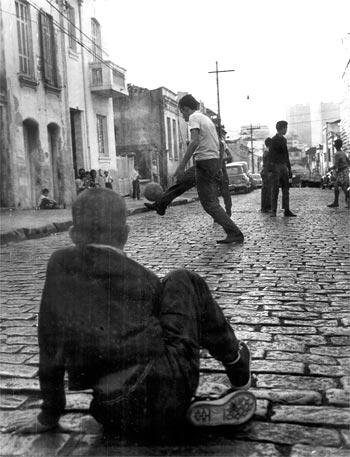









































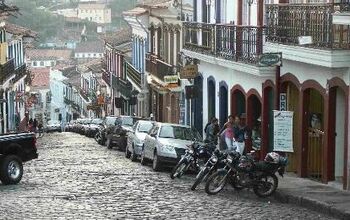
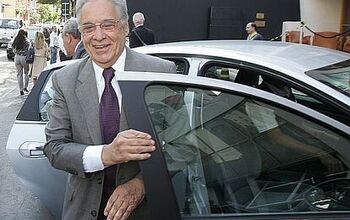
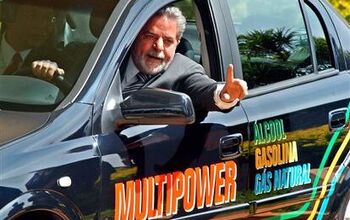
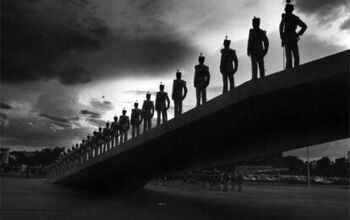






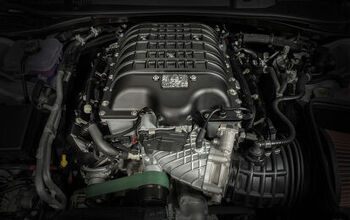




Comments
Join the conversation
"Puma was probably the most successful of the true Brazilian cars. The story goes that they even managed to export to America and Europe." Puma sold less than 22.000 cars, Gurgel sold more than 40.000. Puma exports a few units. Gurgel was made in Holand by Ruska. And exports to almost 50 countries. "They also tried cars, but,well, would you have bought that?" Well, the BR-800/Supermini sold smething as 3/5 of ALL PUMAS.
All the more reason to want a Puma. If they're that rare, and it's not your primary ride, you'd have a rare, fun and affordable toy.